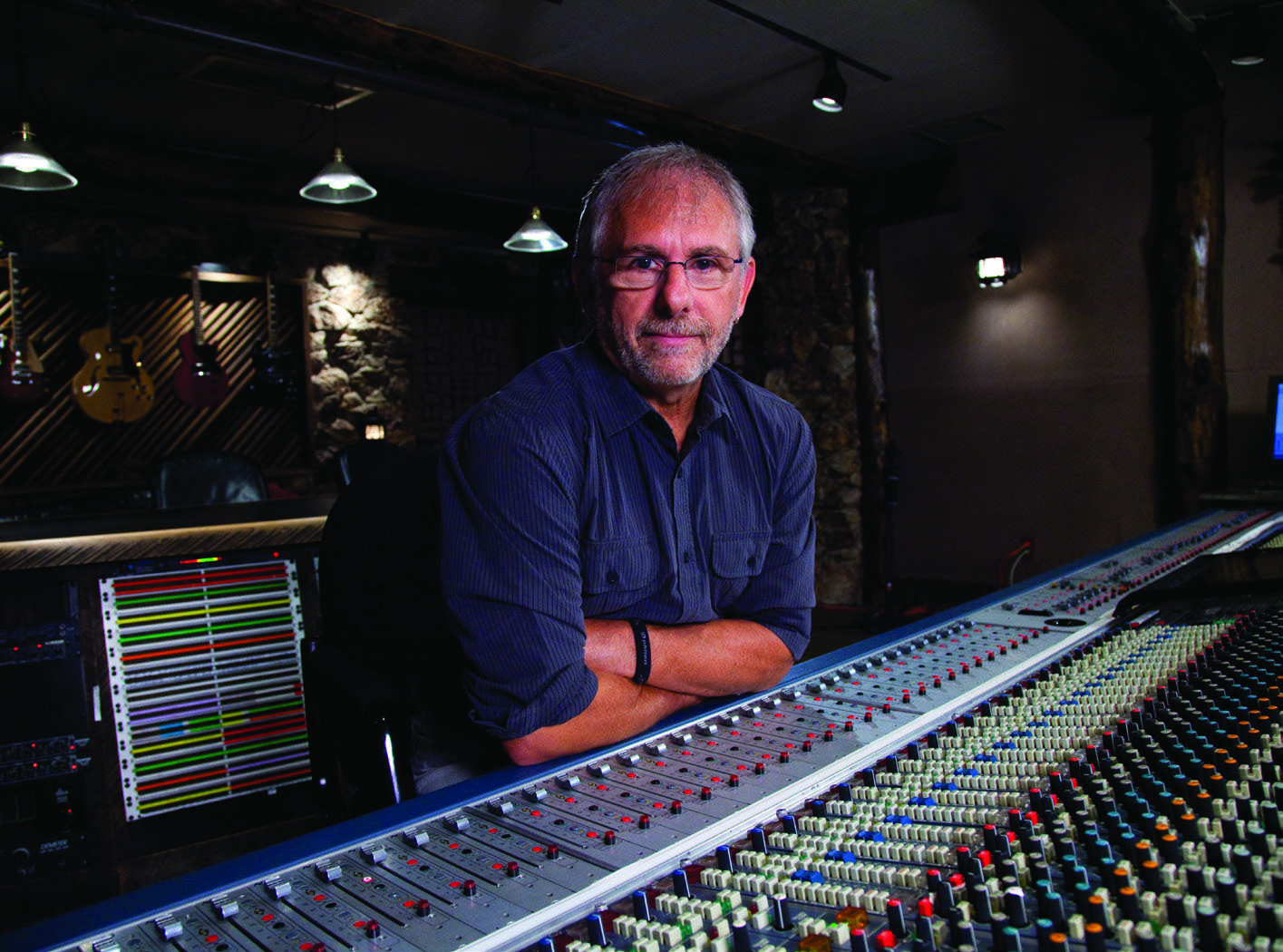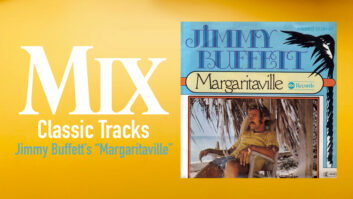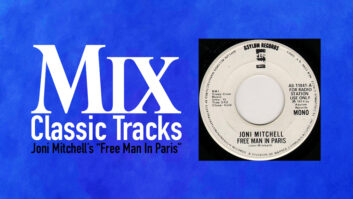
Before the passing of Walter Becker last September, Mix contributor Robyn Flans began a series of interviews with production legend Elliot Scheiner, looking back at Scheiner’s work with Steely Dan. So, in this month’s “Classic Tracks” column, we’re trying something a little different: focusing on Scheiner’s body of work with Steely Dan, and giving him the freedom to choose what stories to tell about a variety of songs from The Royal Scam, Aja and Gaucho.
The sophisticated jazz-flavored compositions of Walter Becker and Donald Fagen have long elevated the sounds of Steely Dan to that rare category known as “musician’s music.” While they’ve been publicly and critically acclaimed for decades, commercial Top 10 hits have been scarce.
Engineer/producer Elliot Scheiner, who knew Becker and Fagen from their touring days with Jay and the Americans, came aboard their Steely Dan ride with The Royal Scam, the band’s fifth studio album, which was released in 1976. As part of a team that included producer Gary Katz, engineer Roger Nichols and mixer Barney Perkins, for the most part Scheiner tracked and mixed Dan projects going forward.
Most of Scheiner’s work with Steely Dan was done at A&R Studios in New York City, where he recalls they had a Neve 8068 and Studer tape machines. There were a couple of Pultec EQP-1As, four Fairchilds and, he says, “All the reverb was from chambers that Phil (Ramone) had tuned and a delay on all of them that Phil insisted on.”
“HAITIAN DIVORCE,” THE ROYAL SCAM

Although Scheiner, wasn’t present for the cutting of this track, his story did inspire the song. Apparently, before they cut the track, Scheiner’s accountant told him that if he was going to get a divorce, he needed to do it by the end of the year. It was October, and Scheiner’s attorney recommended a Haiti excursion.
“I said the next day when I went in, ‘Hey guys I have to take a few days off, I’m going to Haiti,’” Scheiner recalls. “And Donald said, ‘What for?’ And I said, ‘I’m getting a divorce.’
“The whole plane was filled with people who wanted to get divorced,” he continues. “When you got off the plane, the minister of tourism was there in tails and top hat shaking everyone’s hands. I got the divorce decree on parchment paper the next day, and that night all the people partied. And Walter and Donald asked me a bunch of questions when I came back.”
“AJA,” AJA

The title track from this Grammy-winning album was recorded at Producers Workshop, Hollywood, with Bill Schnee at the helm. Although he wasn’t present, Scheiner says the basic tracks were done instantly and clears up a question many have had about the Steve Gadd solo.
“That was his first take,” he declares. “There were two takes, but they went back to the first take. You hear him hit the sticks in the solo, but they didn’t seem to care about that, it was such a good solo.
“There wasn’t anything funny about how we edited the song. Steve Gadd was in the studio next to us, and he hadn’t heard it since he played on it. I think it was Gary who said, ‘Steve, come in, we want you to hear something.’ Steve comes in, we play him the song, he’s grooving to the song, the song ends, and he looks up at Donald and says, ‘Wow, who’s playing drums?’ Walter says, ‘It was you.’ He says, ‘Wow, M-F!’”
Then, a funny thing happened during the mix. Scheiner says that with so much information on the tracks, everything was getting switched around during the three-day mixing process. During a last-minute switch, he removed the bass going from the last chorus into the Gadd solo, and he forgot to put it back in. There was enough leakage that you could hear the bass, so everyone thought it was there.
“They went back to California and they called and said, ‘I think we left the bass off in the end,’ and I didn’t remember,” Scheiner says. “About a week later, I said, ‘Ya know, we might have.’ I listened to the mix again and said, ‘Ya know, we left the bass off.’ They were coming back a week later and I went in the studio and recalled what I remembered most about the entire mix. Donald, Walter and Gary walked in and said, ‘You guys are nuts, there’s plenty of bass on here.’ I had put it back in and it sounded identical to the original mix and they were looking at me like I was crazy. Then they said, ‘You put it back in.’ And I said, ‘Yeah, I did.’ They said, ‘The mix sounds pretty great, but let’s start all over.’ It was worth it.”
“PEG,” AJA
Scheiner tracked the song in New York, then Becker and Fagen took the tracks to L.A. to record the guitar solo.
“Walter didn’t like the solo he did, so they erased it and they brought it back to New York,” Scheiner explains. “Then Robben Ford came in for a day, and they lived with that for a while. Then they asked me to erase it. Then they did Rick Derringer for a day. Each guy was great, but Rick’s lasted until he left the studio, and then Walter turned around to me and said, ‘Erase it.’
“We just spent about six or seven hours on it! It was always defeating to erase something you just did. You never questioned it. So it went away. After Rick, it went to Walter again. We spent another couple of days on that, and he hated that. He said, ‘Erase that.’ They took the tapes out to L.A. and Jay Graydon ended up doing the final solo. You could never figure out what it was they were focusing on, and we didn’t dare ask.”
“Peg” is known for its quintessential Rick Marotta drum track. Scheiner says his usual drum recording technique went as follows:
“Shure SM 57 on the edge of the snare looking onto the skin,” he begins. “For overheads, we had U-67s, toms were Sennheiser 421s. hi-hat an Electro-Voice RE15, the bass drum mic’s would vary—AKG 12 or 421, or RE20. I usually chose something with a high amount of rejection.
“As we got into it, Rick said, ‘I’m not going to play, I want to hear Donald sing.’ They had a melody and no lyrics, so Donald and Walter went in and wrote a bogus lyric and Donald went out and sang it. It was enough for Rick, he just wanted to hear the voice.”
“GAUCHO,” GAUCHO

Drummer Jeff Porcaro has said that he took abuse on this session…
“He took abuse on ‘Gaucho’ only in his mind because they asked him to play a shuffle beat,” Scheiner laughs. “He said, ‘I’m not good with this; Bernard [Purdie] is the guy you want to do this.’ And they kept saying, ‘No, no, we want you to do this.’ After about two hours, Donald and Walter said, ‘We’re not going to get this track, forget about it.’ Gary said, ‘You want to go, go ahead, I’m going to stay here and work on this track.’” Scheiner recalls the band was Porcaro, Chuck Rainey, Steve Kahn, Victor Feldman and Rob Mounsey. Katz was only trying to get the drums track with the idea of re-doing everything else later. Fagen and Becker left at 8 p.m., and everyone else stayed until 2 a.m., when Katz said, “I think we have a drum track.”
“He wanted to edit everything,” Scheiner says. “Roger Nichols was there, as well. I left. I didn’t want to edit anything at 2 in the morning. Roger came in and edited the drum track together. The next day when they came in and heard Jeffrey’s drum track, they were amazed by it, and it ended up becoming the base for the song.”
“BABYLON SISTERS,” GAUCHO
Scheiner says the tracking that he did in Studio A-1 at A&R in New York was seamless. It was the mixing process that was complicated. The mix started in New York for a week, and then moved to L.A. for three weeks at The Village, Studio D, where they mixed the album. Scheiner debunks the Internet story that it was the fade that was problematic and explains that any problems were simply due to the technology of the day.
“This was one of the first computerized consoles—a Neve 8078—and there was so much information in mixing this song,” he says. “Donald didn’t really believe the computer worked, so he said he wanted two sax faders to come up ever so slightly. He looked at the faders to see if there was any movement exactly where he said, and there was, so he started to believe in the computer.
“The problem was that there was so much information and we were using the first NEC computer, which was operated by a floppy disk. When you did a mix, there was so much information, when you were finished, it would be kept on a computer, but once there were additions, you needed to keep the whole mix, but the floppy disk would only keep one mix and we would have to transfer. It would take 15 minutes to transfer, so it took forever. I don’t remember who gave it to us, but we got an award for doing 1,000 mixes on a song.”







